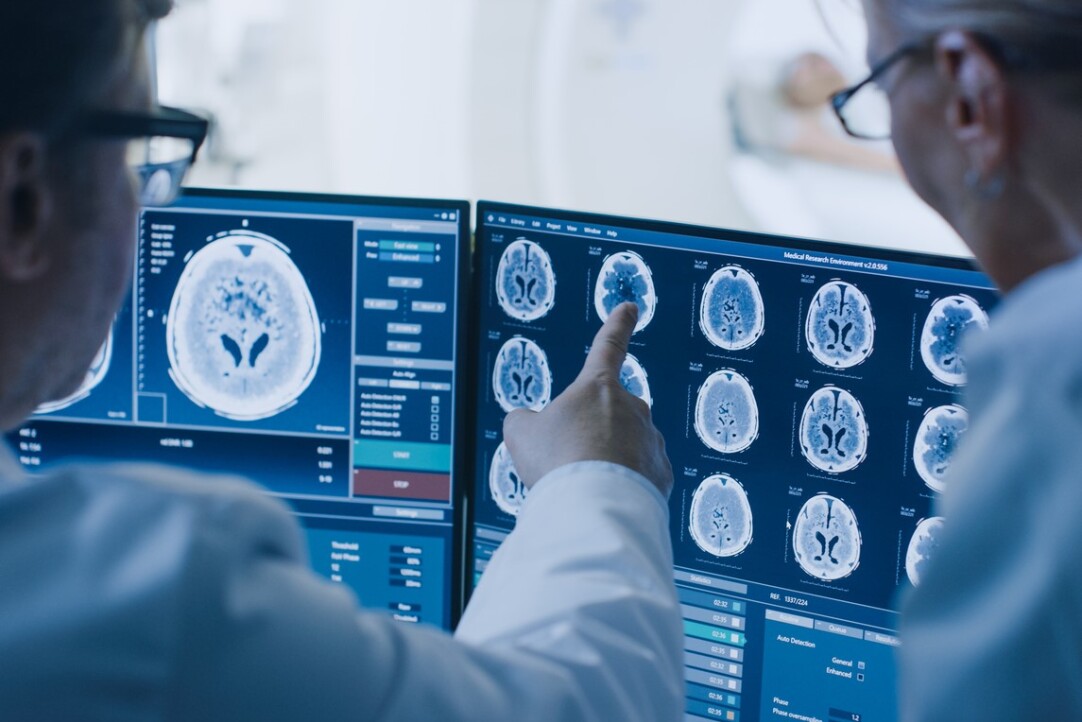Machine Learning Links Two New Genes to Ischemic Stroke

A team of scientists from HSE University and the Kurchatov Institute used machine learning methods to investigate genetic predisposition to stroke. Their analysis of the genomes of over 5,000 people identified 131 genes linked to the risk of ischemic stroke. For two of these genes, the association was found for the first time. The paper has been published in PeerJ Computer Science.
Ischemic stroke is a major cause of death and disability worldwide. This condition occurs when blood supply to a part of the brain is interrupted, causing cell death and impaired brain function. Scientists have long studied the genetic factors influencing stroke risk, but a definitive list of genes linked to stroke predisposition has yet to be established. There are hopes that artificial intelligence methods may provide answers in this regard.
A team of scientists from the HSE Faculty of Computer Science and the Kurchatov Institute proposed using machine learning algorithms to analyse genetic predisposition to stroke. They analysed genomic data from 5,500 unrelated individuals over the age of 55, including ischemic stroke survivors and their healthy counterparts. Samples for the study were collected from 11 laboratories in Europe and 13 in the United States.
The analysis was based on the concept of ranking through learning. First, the researchers developed a predictive model in which the key parameter was the presence or absence of a stroke. Single nucleotide polymorphisms (SNPs), which are variations in the genome at specific sites, were used as markers. The scientists then ranked these markers and selected the most significant ones.
SNPs were analysed and selected using various methods, enabling a new analysis of the data and the identification of genes previously not associated with ischemic stroke. The list of 'suspicious' genetic markers common to two or more methods highlights the reliability of the results.
Working with such a large dataset—nearly 900,000 SNPs per 5,500 participants—required us to move beyond purely statistical analysis methods. Machine learning made it possible to process all of this. As a result, we identified 131 genes, most of which had already been linked to ischemic stroke. However, for two of these genes, this was the first time we discovered the association,' explains Dmitry Ignatov, Head of the Laboratory for Models and Methods of Computational Pragmatics at HSE University.
In particular, the scientists found an association between stroke and ACOT11, a gene involved in fatty acid metabolism and shown in animal experiments to affect inflammatory processes and blood lipid levels. The second gene newly linked to ischemic stroke is UBQLN1, which is involved in the mechanisms that protect cells from oxidative stress. There is evidence that a mutation in this gene is associated with neurodegenerative diseases.
These discoveries could help develop multigenic risk models that predict a person's predisposition to stroke. Information about the newly associated genes could also serve as the foundation for developing drugs and therapies aimed at reducing the risk of ischemic stroke.

Gennady Khvorykh
'Identifying two new stroke-associated genes is an excellent outcome for any method. Our machine learning approach clearly holds strong potential for detecting genes linked to diseases that result from a variety of factors,' comments Gennady Khvorykh, Chief Specialist at the Kurchatov Institute.
The proposed approach to analysing genetic markers demonstrates versatility and can be effectively adapted for a wide range of studies beyond ischemic stroke. This methodology can be applied to any diseases or markers with data available in the 'sample—SNP—class' format.
'Although we initially developed this tool for a specific task, the results reveal its potential in a broader context. The ability to work with a variety of genetic data makes our method valuable to researchers across various fields of biology and medicine,' says Stefan Nikolić, graduate of the Faculty of Computer Science and the Doctoral School of Computer Science at HSE University.
See also:
HSE Researchers Offer Guidance to Prevent Undergraduate Burnout
Researchers at the HSE Institute of Education have identified how much time students should ideally devote to their studies, extracurricular activities, and personal life to maintain strong academic performance without compromising their mental health. An analysis of responses from 2,753 students, combined with their actual academic results, revealed several risk factors—such as excessive homework—as well as positive factors, including sufficient sleep, regular exercise, and moderate participation in projects. Based on these findings, the researchers developed practical recommendations for both students and universities. The paper has been published in the European Journal of Education.
Scientists Discover Why Parents May Favour One Child Over Another
An international team that included Prof. Marina Butovskaya from HSE University studied how willing parents are to care for a child depending on the child’s resemblance to them. The researchers found that similarity to the mother or father affects the level of care provided by parents and grandparents differently. Moreover, this relationship varies across Russia, Brazil, and the United States, reflecting deep cultural differences in family structures in these countries. The study's findings have been published in Social Evolution & History.
When a Virus Steps on a Mine: Ancient Mechanism of Infected Cell Self-Destruction Discovered
When a virus enters a cell, it disrupts the cell’s normal functions. It was previously believed that the cell's protective response to the virus triggered cellular self-destruction. However, a study involving bioinformatics researchers at HSE University has revealed a different mechanism: the cell does not react to the virus itself but to its own transcripts, which become abnormally long. The study has been published in Nature.
Researchers Identify Link between Bilingualism and Cognitive Efficiency
An international team of researchers, including scholars from HSE University, has discovered that knowledge of a foreign language can improve memory performance and increase automaticity when solving complex tasks. The higher a person’s language proficiency, the stronger the effect. The results have been published in the journal Brain and Cognition.
Artificial Intelligence Transforms Employment in Russian Companies
Russian enterprises rank among the world’s top ten leaders in AI adoption. In 2023, nearly one-third of domestic companies reported using artificial intelligence. According to a new study by Larisa Smirnykh, Professor at the HSE Faculty of Economic Sciences, the impact of digitalisation on employment is uneven: while the introduction of AI in small and large enterprises led to a reduction in the number of employees, in medium-sized companies, on the contrary, it contributed to job growth. The article has been published in Voprosy Ekonomiki.
Lost Signal: How Solar Activity Silenced Earth's Radiation
Researchers from HSE University and the Space Research Institute of the Russian Academy of Sciences analysed seven years of data from the ERG (Arase) satellite and, for the first time, provided a detailed description of a new type of radio emission from near-Earth space—the hectometric continuum, first discovered in 2017. The researchers found that this radiation appears a few hours after sunset and disappears one to three hours after sunrise. It was most frequently observed during the summer months and less often in spring and autumn. However, by mid-2022, when the Sun entered a phase of increased activity, the radiation had completely vanished—though the scientists believe the signal may reappear in the future. The study has been published in the Journal of Geophysical Research: Space Physics.
Banking Crises Drive Biodiversity Loss
Economists from HSE University, MGIMO University, and Bocconi University have found that financial crises have a significant negative impact on biodiversity and the environment. This relationship appears to be bi-directional: as global biodiversity declines, the likelihood of new crises increases. The study examines the status of populations encompassing thousands of species worldwide over the past 50 years. The article has been published in Economics Letters, an international journal.
Scientists Discover That the Brain Responds to Others’ Actions as if They Were Its Own
When we watch someone move their finger, our brain doesn’t remain passive. Research conducted by scientists from HSE University and Lausanne University Hospital shows that observing movement activates the motor cortex as if we were performing the action ourselves—while simultaneously ‘silencing’ unnecessary muscles. The findings were published in Scientific Reports.
Russian Scientists Investigate Age-Related Differences in Brain Damage Volume Following Childhood Stroke
A team of Russian scientists and clinicians, including Sofya Kulikova from HSE University in Perm, compared the extent and characteristics of brain damage in children who experienced a stroke either within the first four weeks of life or before the age of two. The researchers found that the younger the child, the more extensive the brain damage—particularly in the frontal and parietal lobes, which are responsible for movement, language, and thinking. The study, published in Neuroscience and Behavioral Physiology, provides insights into how age can influence the nature and extent of brain lesions and lays the groundwork for developing personalised rehabilitation programmes for children who experience a stroke early in life.
'At the Intersection of Mathematics, Biology, and Machine Learning, I Found My Place'
Aleksei Shmelev conducts research in genomics and uses machine learning to explore the history of human populations. In this interview with the HSE Young Scientists project, he discusses the adaptive introgression of Tibetans and Denisovans and the use of IBD graphs to predict human population membership.



